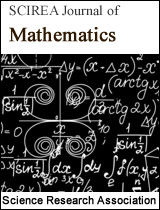The numerical–asymptotic solution of spatial model of the aerobic water treatment
DOI: 397 Downloads 16258 Views
Author(s)
Abstract
In this paper, the mathematical model of biological water treatment by spatial filter was designed. The algorithm of numerical-asymptotic approximation of the solution of the corresponding model problem was developed. It describes a system of nonlinear singularly perturbed differential equations, such as "convection-diffusion mass transfer" for area, bounded by the four surfaces of the current and two equipotential surfaces. On this basis, a computer experiment of optimization parameters of the purification process was conducted. It includes the loading time of protective action, the size of the filter etc., the results of which confirmed a known fact that the performance of the filter greatly depends on the choice of its shape.
Keywords
spatial modeling task, biological filter, asymptotic-numerical solution, singularly perturbed problem
Cite this paper
Andrii Safonyk,
The numerical–asymptotic solution of spatial model of the aerobic water treatment
, SCIREA Journal of Mathematics.
Volume 1, Issue 2, December 2016 | PP. 197-209.
References
| [ 1 ] | Elimelech, M (1992). Predicting collision efficiencies of colloidal particles in porous media, Water Research., 26(1), 1-8. |
| [ 2 ] | Elimelech, M (1994). Particle deposition on ideal collectors from dilute flowing suspensions: Mathematical formulation, numerical solution and simulations. Separations Technology, 4, 186-212. |
| [ 3 ] | Jegatheesan, V (1999). Effect of surface chemistry in the transient stages of deep bed filtration, PhD Dissertation, University of Technology Sydney, 300. |
| [ 4 ] | Johnson, P. R. and Elimelech, M (1995). Dynamics of colloid deposition in porous media: Blocking based on random sequential adsorption, Langmuir, 11(3), 801-812. |
| [ 5 ] | Ison, C.R. and Ives, K.J (1969). Removal mechanisms in deep bed filtration, Che. Engng. Sci., 24, 717-729. |
| [ 6 ] | Ives, K.J (1969). Theory of filtration, special subject No.7, Int. Water Supply congress, Vienna, 220-225. |
| [ 7 ] | Ives, K.J (1970). Rapid filtration, Water Research, 4(3), 201-223. |
| [ 8 ] | Petosa, A.R., Jaisi, D.P., Quevedo, I.R., Elimelech, M., and Tufenkji, N (2010). "Aggregation and Deposition of Engineered Nanomaterials in Aquatic Environments: Role of Physicochemical Interactions", Environmental Science & Technology, Volume 44, September 2010, pages 6532–6549. |
| [ 9 ] | Bomba, A. Safonyk and E. Fursachik (2013) Journal of Automation and Information Sciences 45(4), 16-22. |
| [ 10 ] | A. Safonyk and A. Bomba (2015) Int. J. Appl. Math. Res. 4(1), 1-7. |
| [ 11 ] | A. Safonyk (2015) Modelling the filtration processes of liquids from multicomponent contamination in the conditions of authentication of mass transfer coefficient Int. J. Math. Models and Methods in Appl. Sciences 9, 189-192. |
| [ 12 ] | V. Orlov, A. Safonyk, S. Martynov and S. Kunytskyi (2016) Simulation the process of iron removal the underground water by polystyrene foam filters, I.J.of pure and Appl. Mathematics, 109, No. 4, 881-888. |
| [ 13 ] | A. Bomba, Yu. Klymiuk, I. Prysiazhniuk, O. Prysiazhniuk, A. Safonyk (2016) Mathematical modeling of wastewater treatment from multicomponent pollutionby using microporous particles, AIP Conf. Proc. 1773. |

